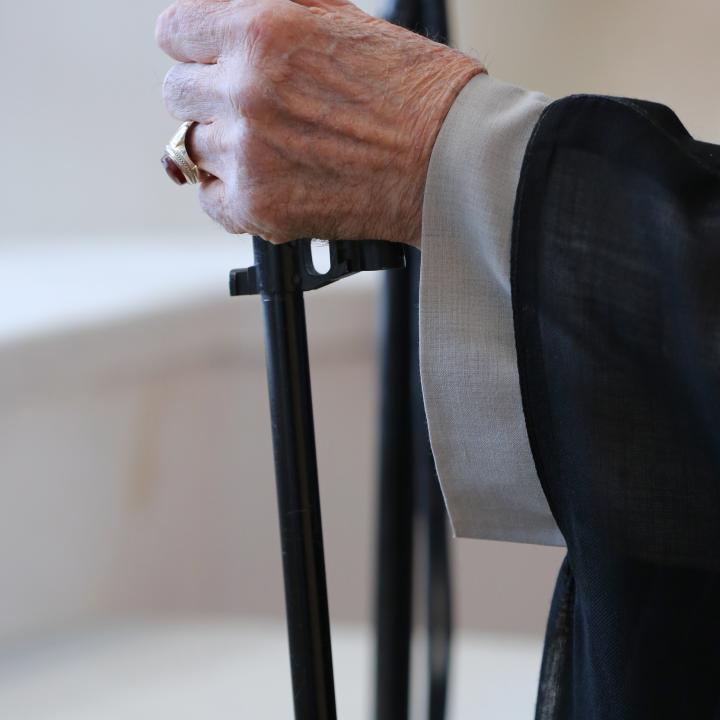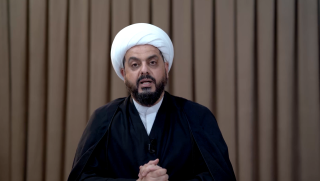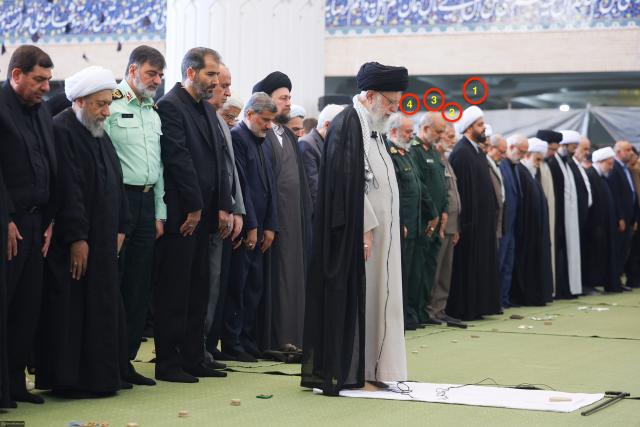
Qais in Tehran, Prominently Seated Behind Khamenei

At a recent event in Iran, the leader of the key Iraqi militia Asaib Ahl al-Haq was strategically positioned in a place of honor directly behind the Supreme Leader.
On the anniversary of the October 7 attack on Israel, Qais al-Khazali, leader of the Iran-backed Iraqi militia Asaib Ahl al-Haq (AAH), delivered a televised speech declaring his readiness to follow in the footsteps of the numerous "axis of resistance" leaders who have been killed by Israel in recent months and become a "martyr" for the same cause. He also reaffirmed his unwavering loyalty to Iran's Supreme Leader Ali Khamenei, vowing to fight until "complete victory" is achieved. In a message to Imam Mahdi, Khazali proclaimed: “We pledge to you, my master and lord, our obedience to you and to your deputy, the Guardian of the Muslims, Sayyed Khamenei, in obedience and continued sacrifice of wealth and lives, and that we will be fighting soldiers until the complete victory is achieved through preparation for your sacred appearance, so that the earth may be filled with justice and fairness after the Zionists have filled it with oppression and injustice” (Figure 1).
This speech came just days after Khazali received special treatment from Khamenei’s office while attending Friday prayers in Tehran. Khamenei led these prayers on October 4, his first Friday sermon in nearly five years. Also notable and unusual was the fact that Khazali was strategically seated directly behind Khamenei and in the front row of the event, traditionally a place of significant honor in the Islamic Republic. When the Supreme Leader leads Friday prayers, that row is typically reserved for the highest-ranking military and civilian officials. Indeed, Khazali was seated next to senior figures in the Islamic Revolutionary Guard Corps (IRGC), including Brig. Gen. Muhammad Shirazi, head of the Supreme Leader’s military office; Brig. Gen. Ahmad Vahidi, former commander of the IRGC-Qods Force; and Commodore Ali Fadavi, deputy commander-in-chief of the IRGC (Figure 2).
It is difficult to view this placement as coincidental, especially considering that Iranian officials were well aware the world would be watching this particular Friday prayer. Khazali was likewise given a prominent position near Khamenei during a commemoration ceremony held this May after President Ebrahim Raisi was killed in a helicopter crash.
These seating choices clearly indicate that the regime has assigned increasing importance to Khazali and his role within Iran's broader regional strategy. It is rare for any foreign figure to be placed in the first row during Friday prayers led by Khamenei; rather, it is generally occupied by people like President Masoud Pezeshkian, Speaker of Parliament Muhammad Baqer Qalibaf, Chief Justice Qolam-Hossein Mohseni-Ejei, Army commander Abdolrahim Mousavi, and Brig. Gen. Ahmad Reza Radan, head of the Law Enforcement Command.
Despite attempts by other Iraqi militias to downplay AAH’s role within the muqawama (resistance), Khazali’s growing prominence is hard to ignore. In November 2023, Ahmad Mohsen Faraj al-Hamidawi (aka Abu Hussein), the secretary-general of Kataib Hezbollah, issued a statement thanking various militias that had participated in anti-U.S. operations, notably leaving out AAH. This omission frustrated AAH leaders, who were increasingly worried about placating their militant hardliner factions.
Less than a year later, however, hardliners and political leaders alike cannot fail to notice that Iran is repeatedly rewarding AAH and Khazali in very public fashion. The reason may be that AAH plays an important role in the muqawama that Tehran fully supports—that of an outwardly nonkinetic movement that plays the leading role in capturing the Iraqi state. (Notably, another "soft war" practitioner—Kataib Hezbollah ideologue Hashem al-Haidari, head of the Ahd Allah Islamic Movement—was the other Iraqi muqawama official positioned in a prominent place on October 4, though not in the first row.)
An alternate theory is that recent setbacks by key proxies Hamas and Hezbollah may be leading Iran to assign more significant kinetic roles to AAH. So far, the group has provided only logistical support to the Qods Force in orchestrating anti-U.S. and anti-Israeli strikes conducted by other Iraqi militias. Yet the question remains: will AAH begin to take part in kinetic operations directly moving forward?







